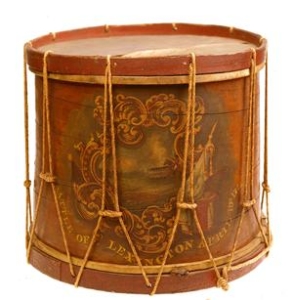Who was William Diamond?
William Diamond was the drummer of Captain John Parker’s Company who sounded the alarm summoning the members of the Lexington militia to the Common on April 19, 1775. It was William Diamond’s drum that sounded just before the shot heard round the world – it was William Diamond’s drum that kicked off the Revolutionary War and it was William Diamond’s drum that supported the Minutemen as they entered their campaign for freedom and independence.
William Diamond was born in Boston on July 21, 1755. He served several tours of duty with the Continental Army and was an active part of the siege of Boston, and the New York Campaign of 1776. He was also one of the brave few who responded to General Washington’s appeal and agreed to serve an extra six weeks of duty – an action that led to his participation in the Battle of Trenton.
Following his last enlistment, William Diamond returned to Lexington where he worked as a wheelwright. It is widely believed that he may have lived on Massachusetts Avenue in East Lexington during this time. Following his apprenticeship, William married Rebecca Simonds, also from Lexington – and they moved and settled in Peterborough, NH.
William Diamond will always be remembered for drumming the soldiers into battle that early April morning. He inspired an army, supported a campaign that no one would have believed could yield success, and stood bravely and confidently in the face of tremendous uncertainty. It is for those reasons that we continue to honor the name of William Diamond – and it is for those reasons that we celebrate the drum as a symbol of our strength, courage, resiliency, and community values.
Just as William Diamond’s drum led our minutemen into battle – the William Diamond Middle School Community will be led by the values and principles represented by DRUM (Diversity, Responsibility, Unity, and Mindfulness) and the symbol of the drum will continue to serve as a consistent and constant reminder of our strength, courage, resiliency, and community.
Battle scene by William Barnes Wollen



